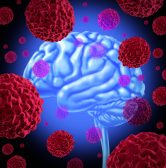Hiv –>
<a href="https://www.biologyonline.com/dictionary/human-Immunodeficiency“>virus
(Science: virology) a type of retrovirus (<a href="https://www.biologyonline.com/dictionary/human-Immunodeficiency“>virus) that is responsible for the fatal illness <a href="https://www.biologyonline.com/dictionary/acquired-Immunodeficiency“>syndrome. Two strains have been identified.
type 1: the retrovirus recognised as the agent that induces aids.
type 2: a virus closely related to hiv-1 that also leads to immune suppression. Hiv-2 is not as virulent as hiv-1 and is epidemic only in west Africa.
Acronym: hiv
infection by the human immunideficiency virus.The virus that causes <a href="https://www.biologyonline.com/dictionary/acquired-Immune”>deficiency Syndrome (aids); it replicates in and kills the helper t cells.See <a href="https://www.biologyonline.com/dictionary/human-Immunodeficiency“>virus.
Dictionary > Hiv
You will also like...

Genetics – Lesson Outline & Worksheets
Topics Modules Quizzes/Worksheets Description Introduction to Genetics Genetics – Definition: Heredity and ..

Takahē (Porphyrio hochstetteri)
Meet the colorful takahē, an extremely rare flightless bird. Find out more about its unique features and why they matte..

Types and Causes of Brain Damage
This tutorial describes the different types and causes of brain damage. Find out how genetics, physical injury, lack of ..

Roots
This study guide tackles plant roots in greater detail. It delves into the development of plant roots, the root structur..

The Hominids
The hominid family diversified from the apes around 6 to 8 million years ago. Since then, the evolutionary path has prov..

Muscle
Muscle cells are specialized to generate force and movement. Learn about the different types of muscle tissues in this t..
